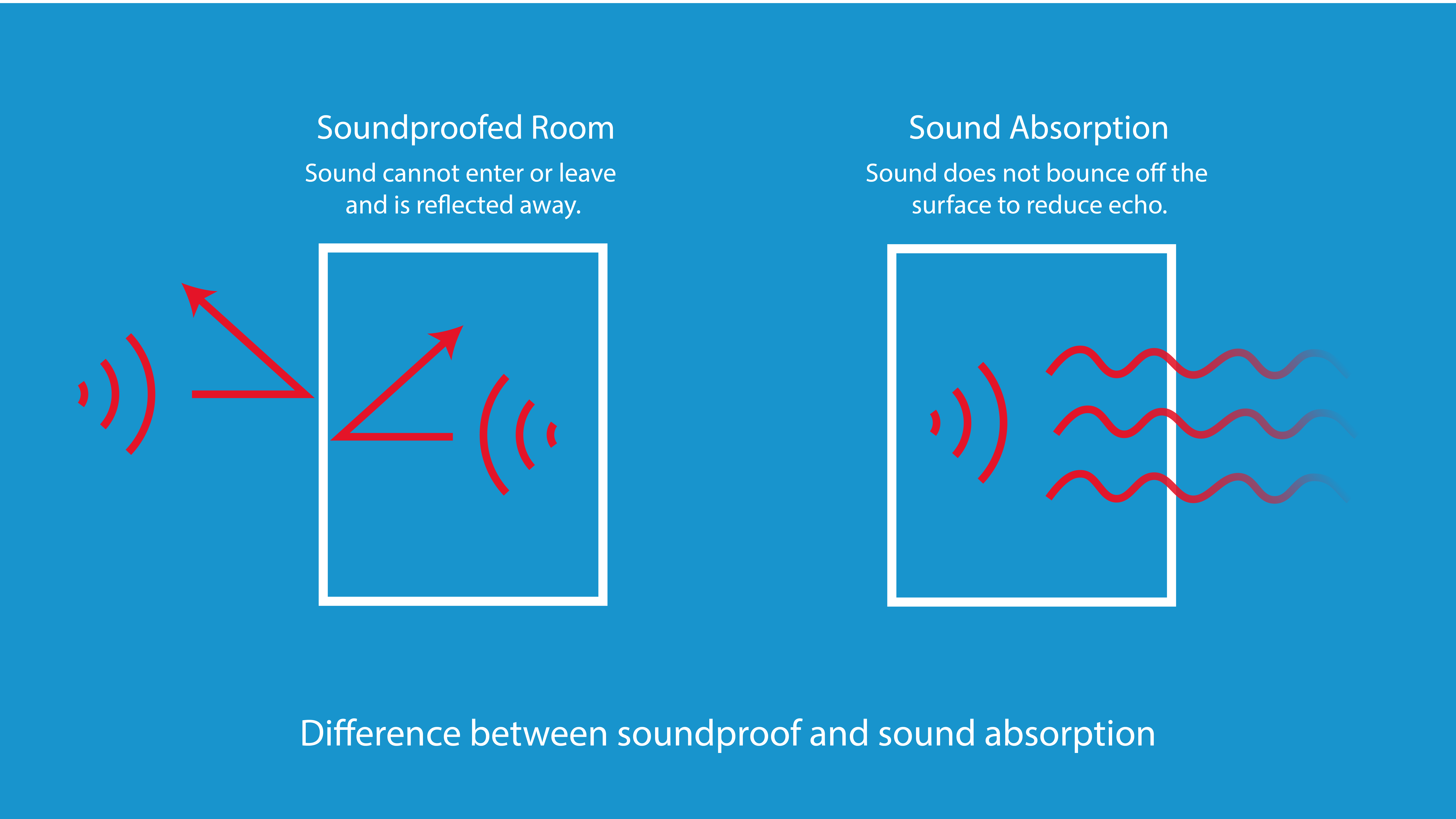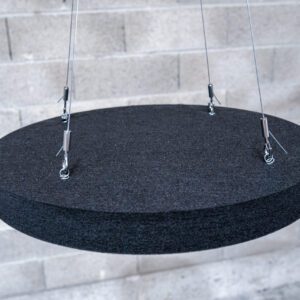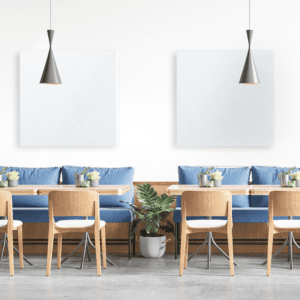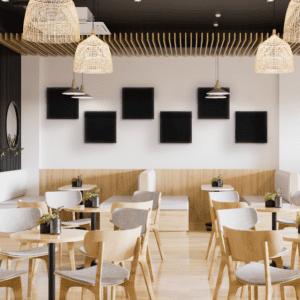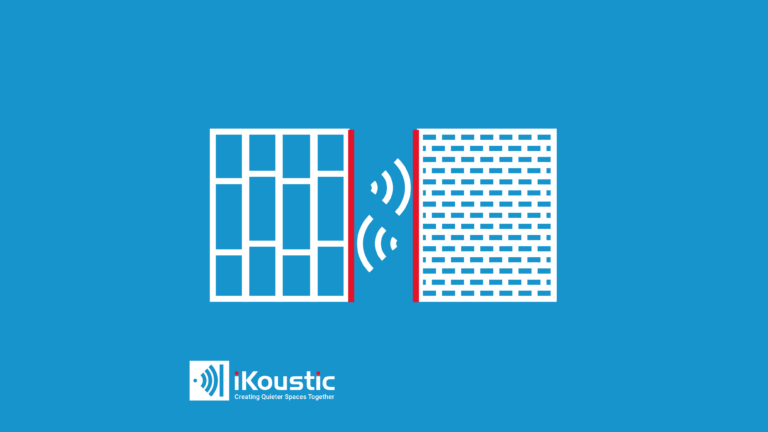Soundproofing vs sound absorption – differences explained
Soundproofing is a barrier against sound entering or leaving a space. Sound absorption reduces reverberation (echo) and improves the clarity of sound. Sound absorption does not prevent sound entering or leaving a space but stops soundwaves ‘bouncing’ off surfaces.
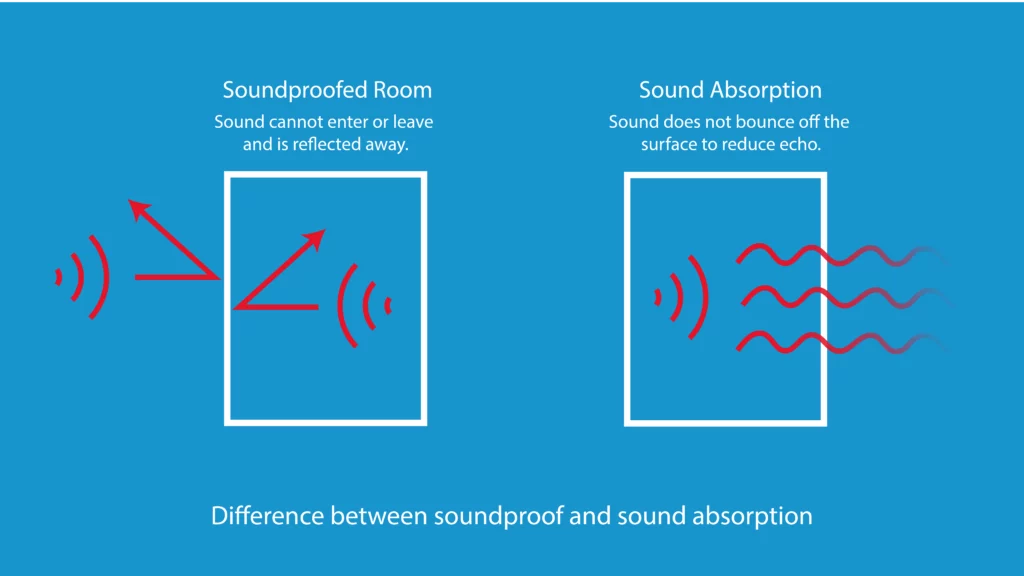
Sound absorption is often required in large spaces such as halls, conference rooms and open offices. These spaces have a lower ratio of soft materials to hard surfaces so reverberation is high. However, clarity of speech and other sounds are often important. Soundproofing may also be needed to reduce the noise leaving or entering the room, however, soundproofing would not improve the attenuation (clarity) of sound inside the space like absorption.
Soundproofing is needed when partitions do not provide sufficient resistance to the passage of sound. Poor soundproofing can be caused by construction materials with low mass and open cavities. Sound absorption will not improve weak partitions, as it does not prevent sound passing through it, only bouncing off.
Do I need sound absorption or soundproofing?
You need sound absorption to control the intelligibility of sounds inside a room. You need soundproofing to control the entry or exit of sound from a room. Sound absorption will not work if the noise comes from outside the room. To stop noise entering your room, you will need soundproofing. Soundproofing should also be used to prevent noise escaping the room and disturbing adjoined spaces.
Use sound absorption if you have a reverberation (echo) issue inside the room and noises are hard to discern. Sound absorption will help improve the clarity of sound and is good for offices, concert halls and conference rooms where intelligibility is crucial.
Does sound absorption make a room quieter?
Yes, sound absorption makes a room quieter by reducing reverberation (echo). Soundwaves which bounce around a room cause poor acoustics and lead to ‘amplification through reverberation’. This is when sounds are repeated alongside new sounds, making a room noisier. Sound absorption will also help to reduce background noise to make a room quieter.
However, sound absorption will not make an adjoined room quieter as it does not help prevent the passage of sound. Sound absorption is not a barrier, so soundwaves can still pass through and into a neighbouring room.
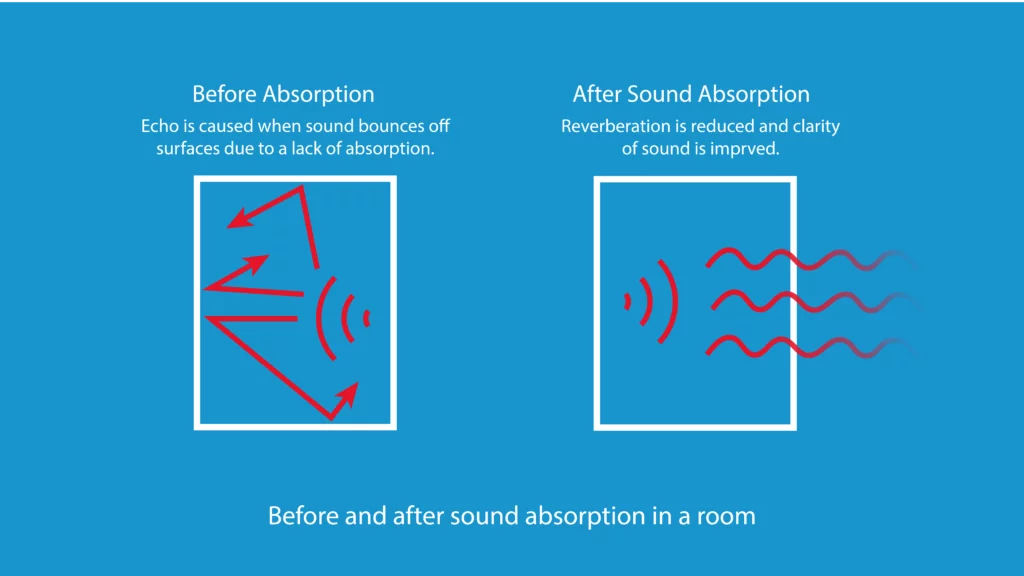
Does soundproofing work both ways?
Yes, soundproofing works both ways as it is a barrier which sound cannot move through. This is a difference between soundproofing and sound absorption as absorption only treats the room it is in. Soundproofing is the plug in a sink; it stops sound leaving or entering. Sound absorption is the sponge; it can only soak up sound if it is in the sink.
Soundproofing is a better choice than sound absorption if you have noisy neighbours as soundproofing will stop their noise coming into your home. Likewise, if you are noisy, soundproofing prevents you disturbing other rooms. It is therefore often used in studios and drumming practice rooms.
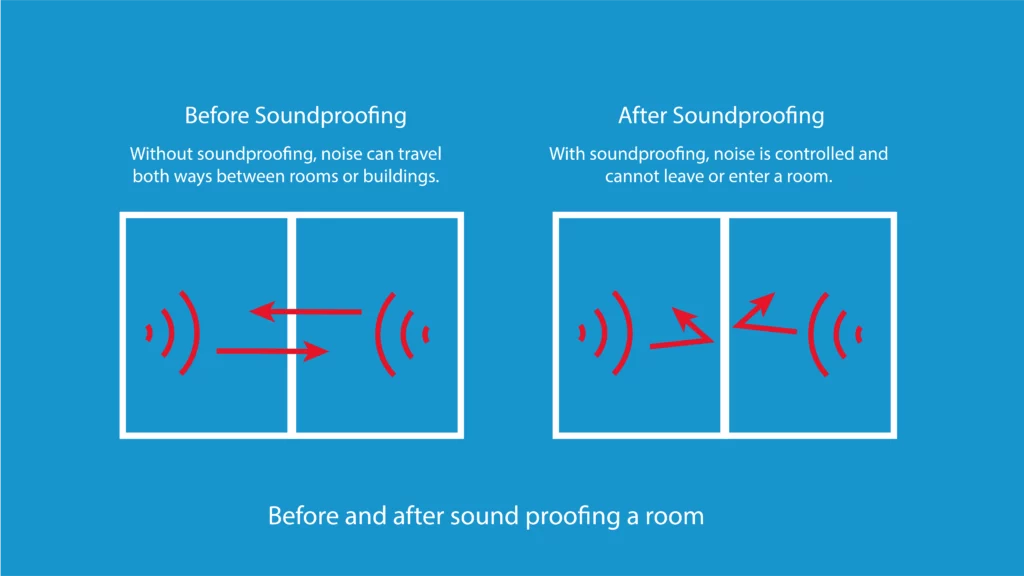
Sound absorption materials
Sound absorption materials have an open structure which allows sound waves to pass through, instead of bouncing off. As the sound passes through the structure, it is transformed into other energy such as heat and diffused.
Sound absorption materials can be open fibers or open cell foams. The open structure allows the sound to travel through it using the medium of air. Sound absorption materials can be panels on walls or baffles hung from ceilings to reduce the ratio of hard to soft surfaces.

